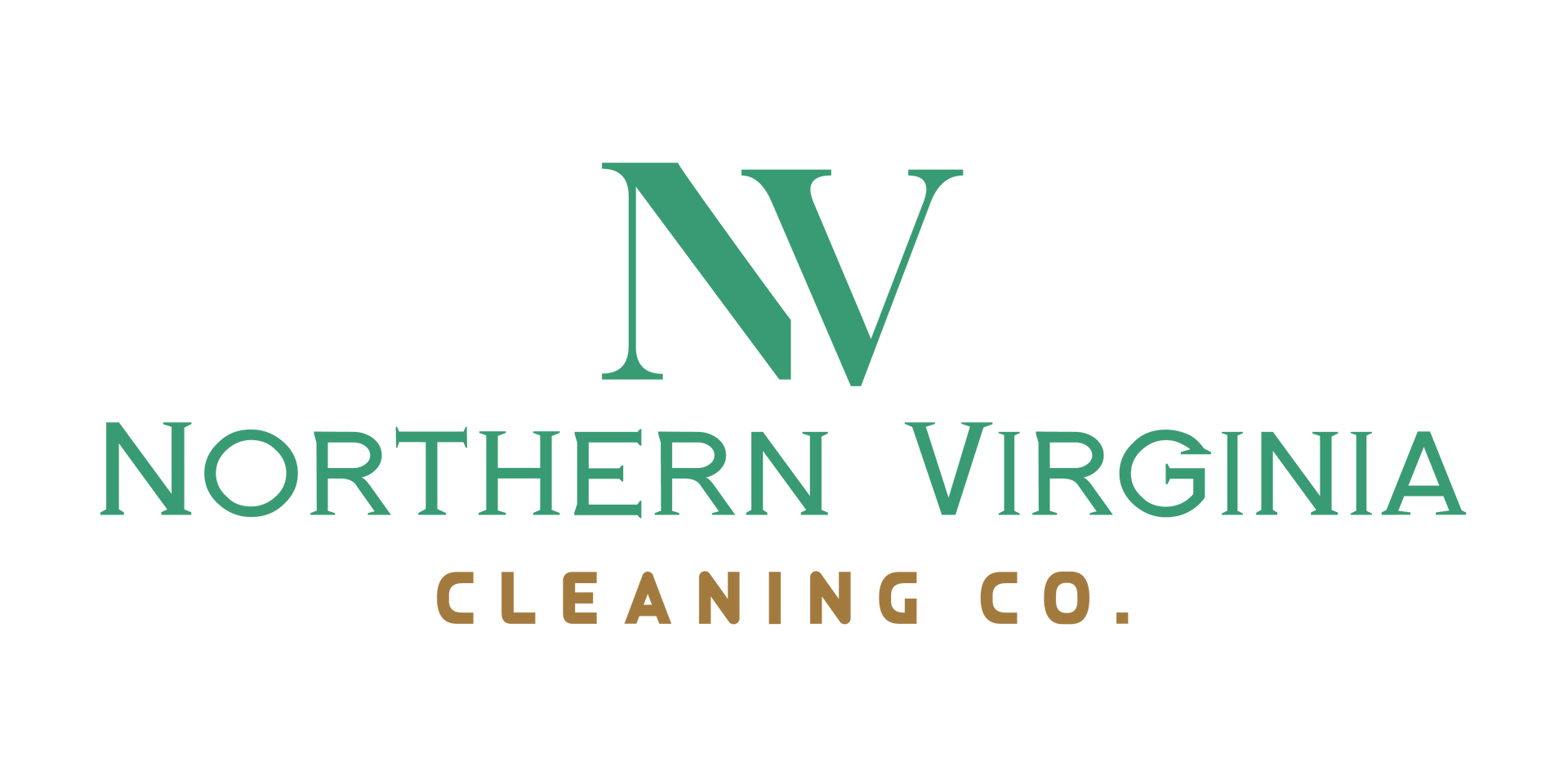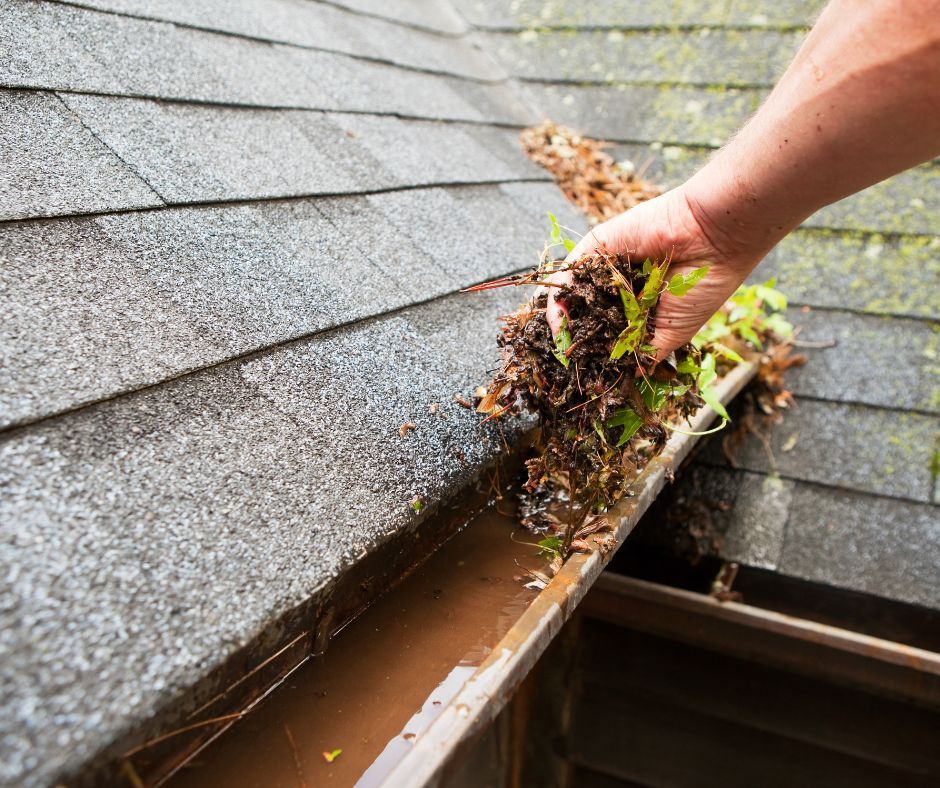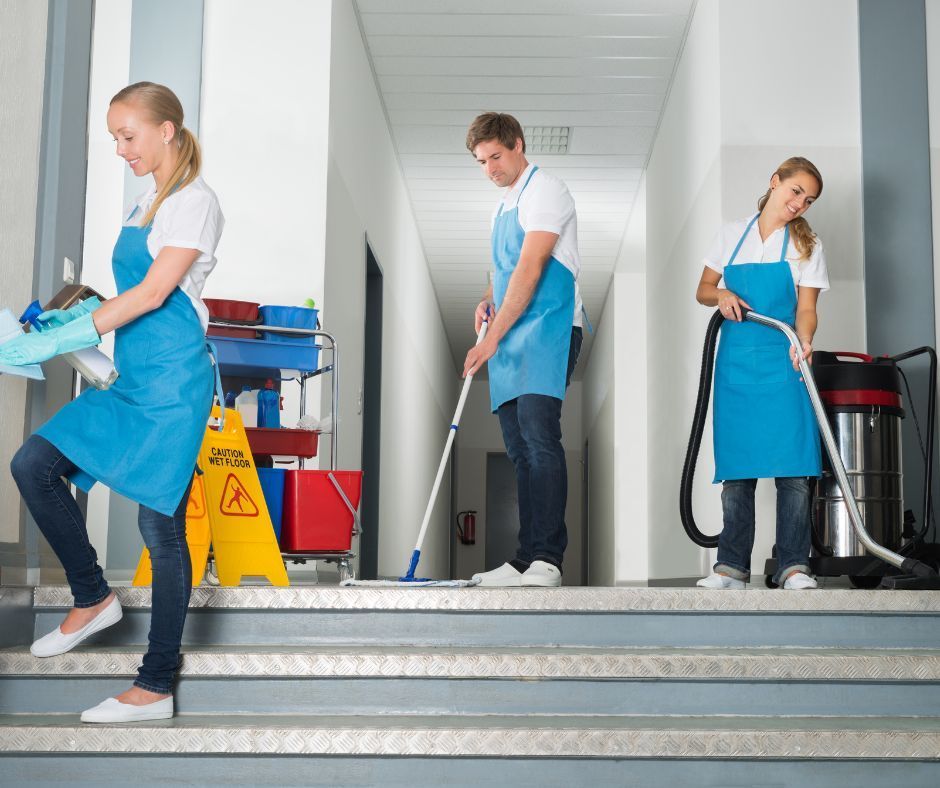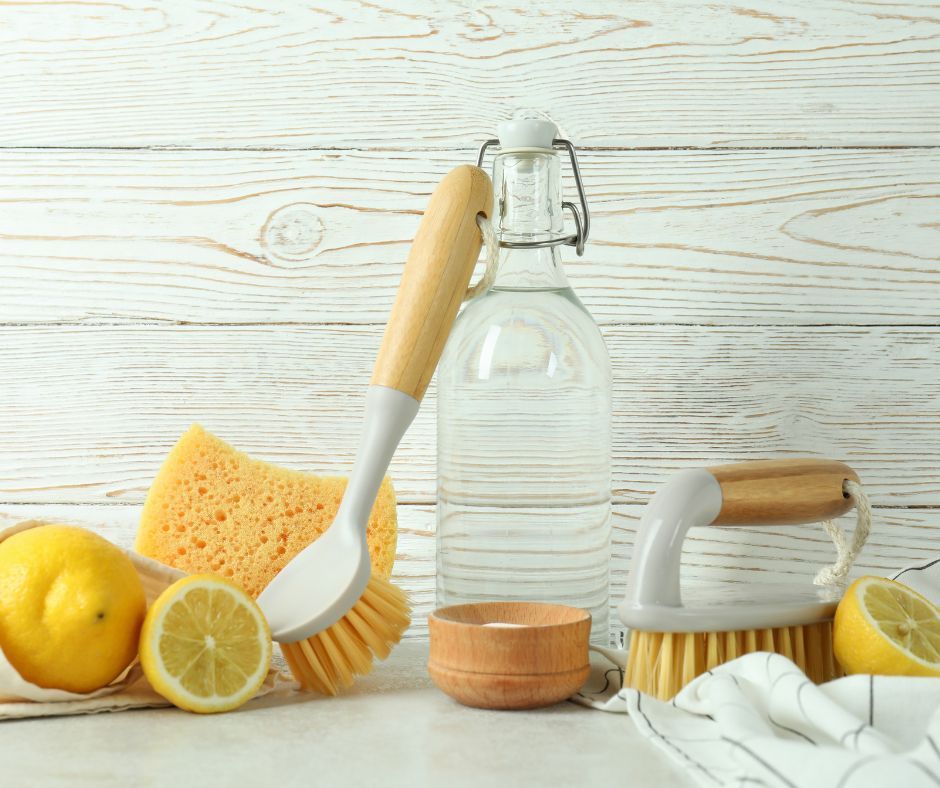10-Minute Kitchen Cleaning Hacks You Need To Try Today
Is your kitchen in need of a good cleaning? We’ve all been there; the dishes are piling up, and the counters are cluttered. If you’re looking for an efficient way to get your kitchen spick and span, look no further! We have 10-minute kitchen cleaning hacks that’ll save you time and energy.
These super simple tricks will make your life a whole lot easier. From de-greasing stovetops to removing stubborn stains, you won’t believe how easy it can be to refresh your kitchen. So grab a few cleaning supplies, and let’s get started!
Ready to tackle those pesky chores with minimal effort? With these ten tips, you’ll have the sparkling kitchen of your dreams in no time. So please keep reading to find out what they are, and prepare to revolutionize how you clean!
Wipe Down Surfaces
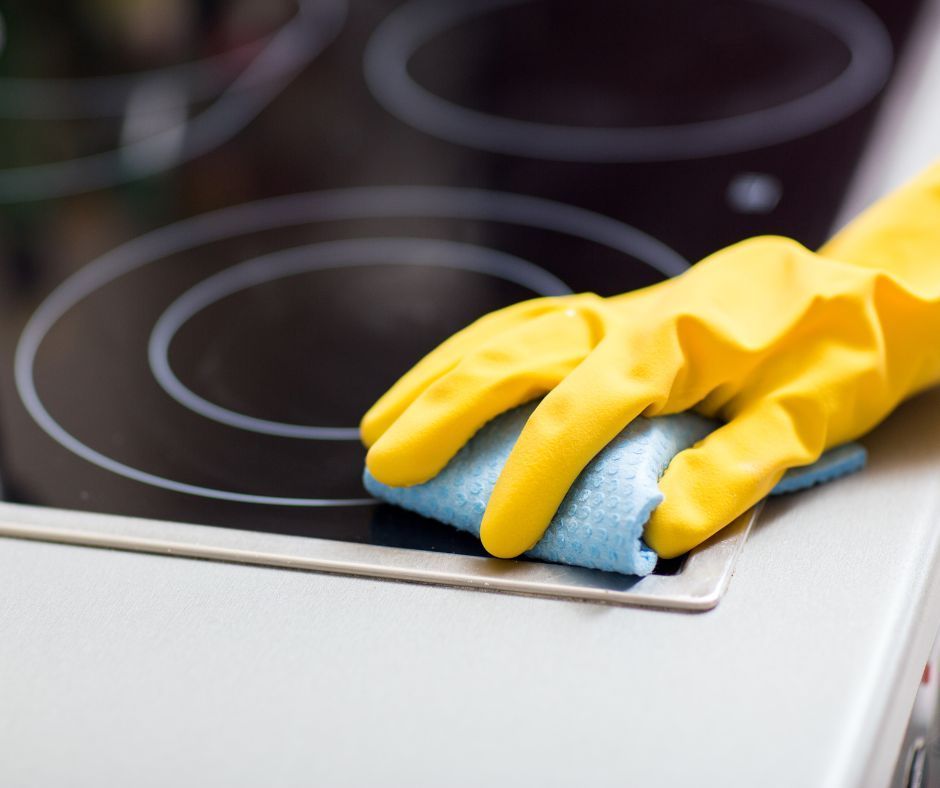
It’s easy to overlook surfaces when it comes to cleaning the kitchen. But if you take a few minutes to wipe down your countertops, cabinets, and appliances, you’ll be surprised by how much cleaner your space looks.
To get started, grab a microfiber cloth and start wiping. You can use this cloth for all your surfaces since it’s safe for any finish and won’t scratch or leave behind lint. Remember to move items off the countertop so you can get underneath too.
You don’t have to use any unique cleaning products, either. Instead, mix some warm water and dish soap in a spray bottle and use it on all your surfaces. Leave it on for a few minutes while you wipe everything down with the microfiber cloth. Then rinse thoroughly with clean water and dry with a paper towel or cloth. And that’s it – you’re done! No need for harsh chemicals or time-consuming scrubbing sessions – just quick and easy wiping is all it takes.
Disinfect Countertops
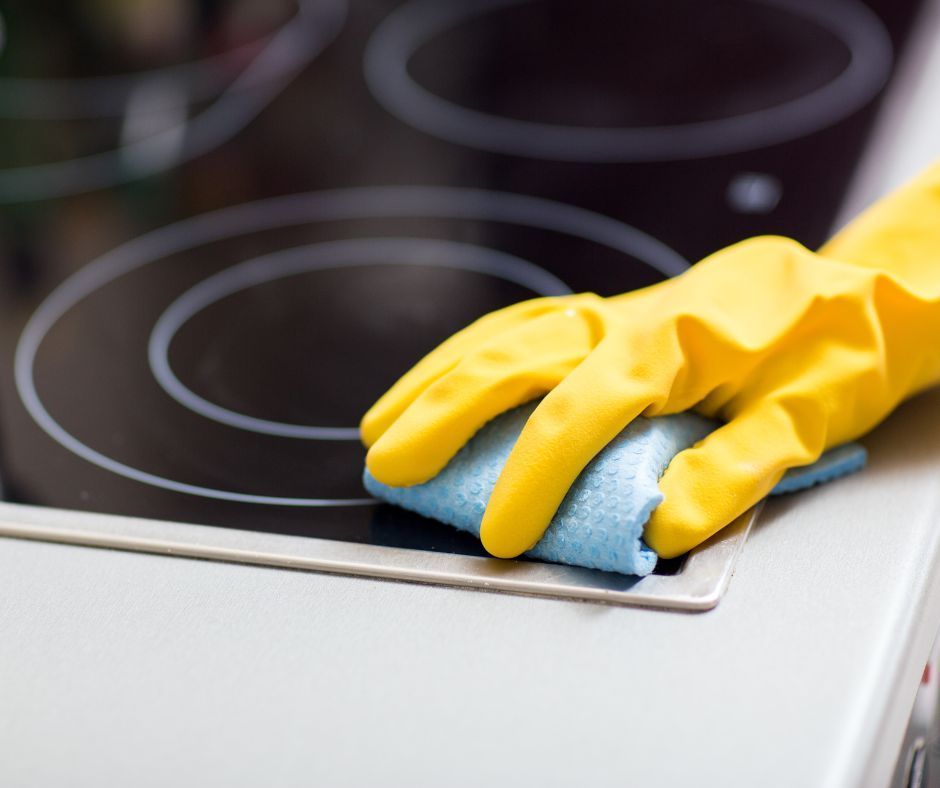
Now that you have wiped down all the surfaces in your kitchen, it’s time to move on to disinfect the countertops. This is a crucial step in keeping your kitchen clean and germ-free. Mix four teaspoons of bleach into one quart of water to get started. Then, take a sponge or cloth and dip it into this solution. Ensure to ring out the excess liquid before wiping down all your countertops. Be sure to pay extra attention to areas where food preparation occurs, as those are the most likely places for bacteria to grow and spread.
When disinfecting the countertops, use a separate cloth or paper towel to wipe away any remaining moisture. Then, rinse with plain water and dry with a clean towel or paper towel. Doing this will help prevent streaks from forming on your surfaces and will also help keep them looking shiny and new.
Finally, consider occasionally using a natural cleaner like vinegar to protect against germs and bacteria. As a bonus, vinegar can also help remove sticky residue from spills or splashes that may have occurred during food preparation. When used regularly with bleach solutions, it can provide an extra layer of defence against potential health hazards in your kitchen.
Sweep And Mop Floors

Sweeping and mopping the kitchen floor is integral to keeping it clean. Let’s start by sweeping the floor with a broom.
Make sure to get in all corners and use a dustpan to collect the dirt if necessary. You can also use a vacuum cleaner for those hard-to-reach places. Once you’ve swept, it’s time to mop.
Mix your bucket with warm water and add dish soap or floor cleaner for extra cleaning power.
Dip your mop into the solution and wring out any excess liquid before mopping. Work from one corner of the room to another in slow, steady strokes until all the dirt is gone.
After that, rinse your mop in clean water and dry it well before storing it. Keeping your kitchen floors clean is easy with the right supplies and techniques. Regular sweeping and mopping allow you to maintain a spotless kitchen no matter how often you cook!
Clean The Sink
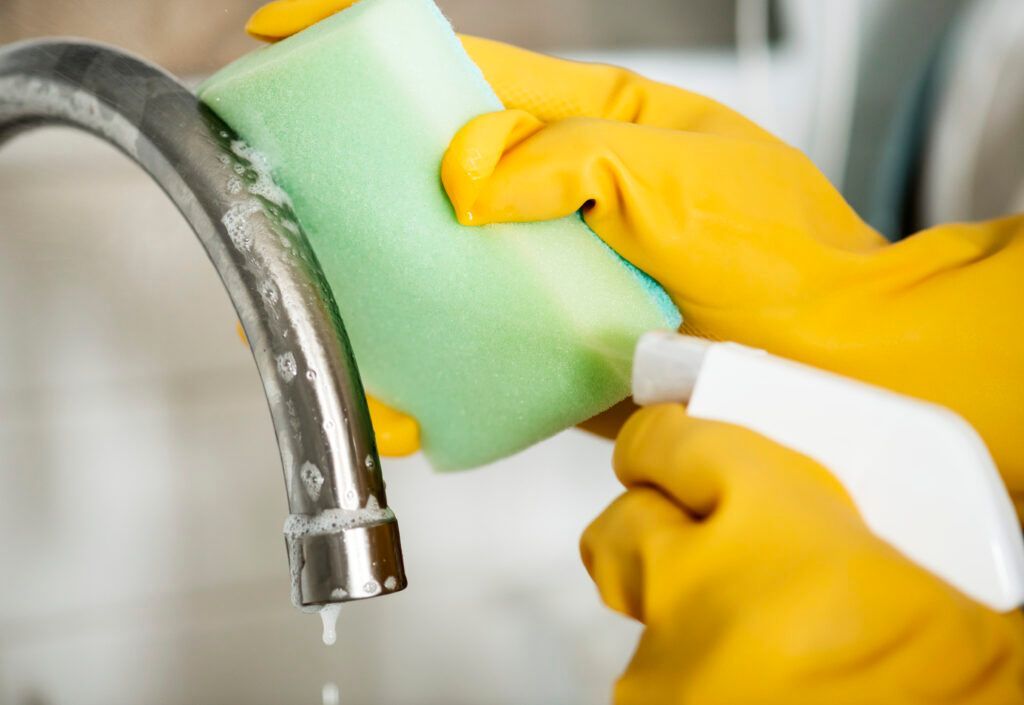
Next up is the sink. It may not need much attention, but it’s likely the most used area in your kitchen. You’ll enjoy a cleaner space and healthier hygiene by properly cleaning it.
Start by clearing out anything that doesn’t belong in the sink, such as dirty dishes, sponges, or food scraps. Then give it a good rinse with hot water and dish soap. Finally, remove any visible grime from the basin and around the faucet.
Finally, use baking soda to remove stubborn stains or residue from food and grease. Once you’ve given it a thorough scrub down, rinse it with warm water and dry it with a soft cloth for sparkling results!
Organize Cabinets And Drawers
Organizing your kitchen cabinets and drawers can seem like an overwhelming task. However, you can make this chore more accessible and faster with a few simple hacks. Start by taking everything out of the cabinets and drawers and sorting it into piles based on what it is used for. This will help reduce clutter within each space by grouping all similar items.
Once everything is sorted, inventory what you have in each pile. This will allow you to determine what items must be discarded or replaced. This will also help identify any gaps in your kitchen storage spaces so that you can purchase any additional supplies that may be needed.
Finally, use organizational tools such as dividers or drawer organizers to keep each cabinet and drawer neat and organized. This is an effective way to maximize the available space while helping keep all kitchen items accessible when needed.
Empty Trash Cans
Emptying your trash cans may seem like something other than a kitchen cleaning task, but keeping them free of debris and odors is essential. Take a few minutes daily to empty your kitchen trash cans and replace the bags. This will help keep your kitchen smelling fresh and prevent any unwanted critters from coming in.
If you’re dealing with an incredibly smelly can, try sprinkling some baking soda on the bottom of the bag before you put a new one in. This will help absorb any lingering odors. Also, you can add a few drops of essential oil to make your kitchen smell fresher!
When emptying the trash cans, please quickly wipe them down with a damp cloth or paper towel. This will help keep them clean and hygienic and keep pests away. These extra steps will help ensure your kitchen stays clean and organized for years.
Dust Blinds And Curtains
Moving on from empty trash cans, let’s discuss dusting blinds and curtains. This can be a tedious chore, but with the right tools and techniques, it doesn’t have to be! First, choose a device designed explicitly for dusting these items. A vacuum cleaner attachment or microfiber cloth are both excellent choices. Next, start at the top of the blind or curtain and work down in long strokes. This will help remove all the dust in one pass and reduce cleaning time.
To give your blinds or curtains an extra shine after dusting:
- Use a soft cloth dampened with warm water to wipe them down.
- Wring out any excess water, so you are not leaving behind streaks or spots on the fabric.
- Make sure you dry them thoroughly before closing them again to avoid any unwanted mould or mildew growth.
In addition to dusting regularly, it’s essential to keep your window areas clean and free from debris. Dust buildup can accumulate quickly if not taken care of regularly, so stay ahead by dusting every few weeks – especially during allergy season! With just a few simple steps, you’ll have your windows sparkling in no time!
Scrub Appliances
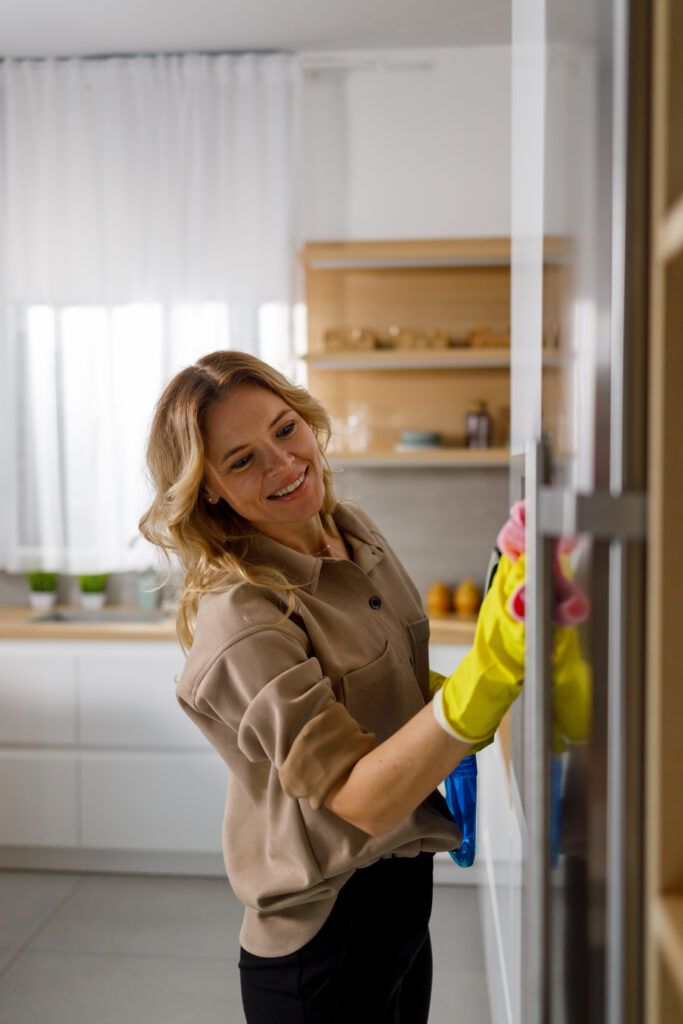
Remember to give your appliances a good scrub for kitchen cleaning. Remove the knobs and handles and disinfect them with warm soapy water. If you’re dealing with more stubborn grime, mix baking soda with a few drops of dish soap and scrub away. The abrasive nature of the baking soda will help remove all that greasy buildup.
Try using a toothbrush dipped in vinegar or lemon juice for extra tough messes to get into hard-to-reach spots. This acidic solution will cut through the grease quickly, leaving your appliance looking clean and shiny. Don’t forget to wipe down the exterior surfaces as well—use some glass cleaner for streak-free results.
It may take some elbow grease, but caring for your kitchen appliances is essential for proper maintenance and longevity. Cleaning them regularly ensures they run smoothly so you can enjoy cooking in your spotless kitchen!
Sanitize Dishware
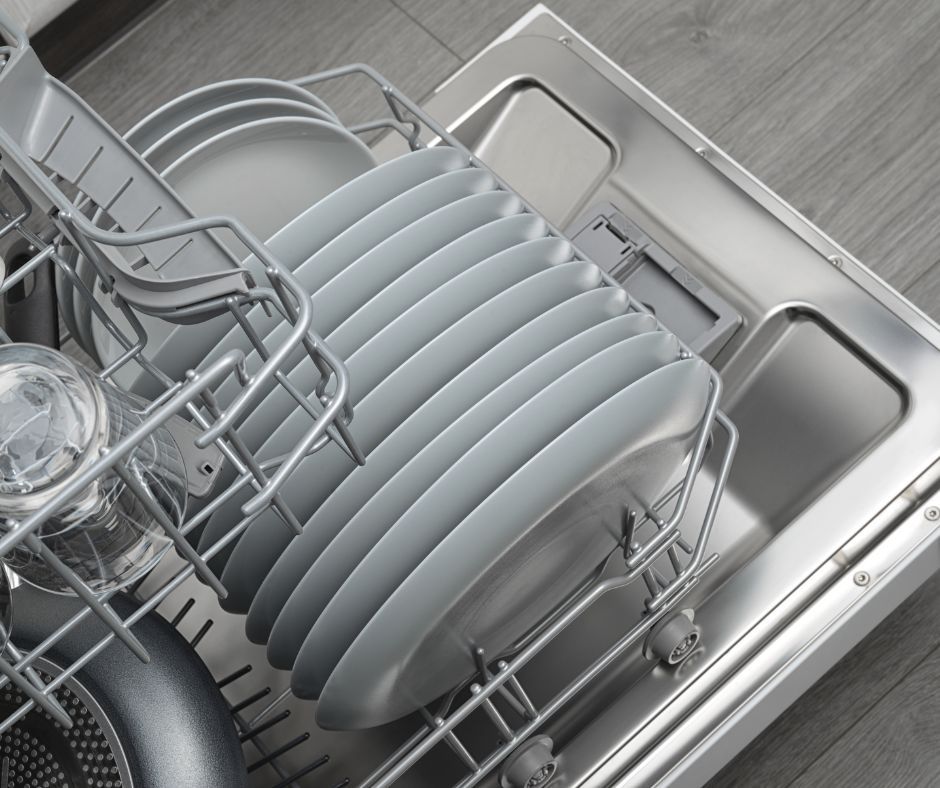
Moving on to sanitizing dishware is one of the most crucial kitchen cleaning tasks. It’s essential to take extra care when sanitizing dishes, as bacteria can quickly breed in them if not done correctly. To start, make sure you use hot water and good quality dish soap for cleaning dishes. You should also make sure that the sink you’re using is clean before you begin washing.
If you don’t have access to a dishwasher, thoroughly scrub the dishes with a sponge or brush before rinsing them with hot water. This will help remove any food particles that may be stuck on the surface of the plates. Once the dishes are washed, rinse them with hot water and soak them in warm soapy water for at least 10 minutes. This will help kill any germs or bacteria that may be present on the surface of the dishes.
Lastly, dry your dishes entirely before putting them away. This will help ensure that no bacteria or germs remain on them and they stay clean until you need to use them again. With these simple steps, your dishware will remain clean and germ-free!
Refresh Linens
Refreshing your linens is an integral part of keeping your kitchen clean. Several easy ways to do this take little time and will help keep your kitchen looking fresh.
One way to refresh your linens is to wash them in the washing machine. You can use the regular or delicate cycle depending on their wear and tear. Use mild detergent and cold water to prevent fading and fraying for best results. Once the linens are done washing, hang them outside in the sun for a few hours if possible – this will give them a natural “refreshing” scent that can last for days!
Another way to refresh your linens is using fabric refresher sprays like Febreze or Lysol. Spray the mist onto the fabric and let it sit for a few minutes before wiping it away with a damp cloth or sponge. This method works great for spots that need extra attention; make sure not to saturate the fabric too much so as not to cause any staining.
It’s also essential to keep your linens smelling fresh between uses by storing them in air-tight containers or drawers when not in use. This will help keep out dust, dirt, and other odours accumulating over time. These simple steps will ensure you always have clean, fresh-smelling linens ready!
Frequently Asked Questions
What Is The Best Way To Clean Tough Stains On Countertops?
Tough stains can be one of the most challenging things to remove when cleaning kitchen countertops. Whether it is oil, grease or food residue from cooking, countertops can quickly develop an unsightly mess that just won’t come off with your usual cleaning methods. Fortunately, there are several ways to tackle these tough stains and make your countertops look new again.
One of the first steps when dealing with tough stains on countertops is determining what type of surface you’re dealing with. Different types of materials require other cleaning techniques. For example, granite requires special cleaners and sealers, while stainless steel should be wiped down using a mild detergent and water solution. Once you’ve identified the material, you can move on to more specific cleaning methods.
Natural remedies such as baking soda or vinegar can effectively remove organic stains such as food or grease without leaving any damage behind. Make a paste from baking soda and water and scrub the affected area gently with a soft cloth before wiping it away with a damp cloth. Alternatively, white vinegar can also be used for tougher stains; mix equal parts of white vinegar and water in a spray bottle and spritz onto the surface before scrubbing clean with a sponge or cloth.
No matter what type of stain you’re dealing with, though, it’s important to remember to always test any cleaner on an inconspicuous part of the countertop first—especially if you’re using something more substantial than baking soda or vinegar—to ensure that it won’t cause any damage before proceeding further. However, with the proper knowledge and tools, tackling even the most challenging kitchen stains will no longer seem impossible!
How Often Should I Clean My Kitchen Cabinets And Drawers?
Cleaning kitchen cabinets and drawers is integral to maintaining a healthy and sanitary home environment. But how often should you clean them? It depends on several factors, including your lifestyle and the type of materials used for the cabinets and drawers.
If you cook frequently and have kids or pets, then it’s best to clean your kitchen cabinets and drawers weekly. This will help ensure any food particles or other messes don’t accumulate over time. If you cook less often, then monthly cleaning should be enough to keep everything in check.
The type of material used for the cabinets and drawers can also impact how often they should be cleaned. For example, solid wood cabinets may need more frequent dusting or polishing than those with a laminate finish, which can usually be wiped down with a damp cloth or all-purpose cleaner. Cleaning off sticky fingerprints or spills can also help to extend their lifespan, so it’s wise to wipe down the doors now and then.
No matter what type of material your kitchen cabinets are made of, regular cleaning is essential for keeping them looking good and working correctly. In addition, doing this regularly can save you from needing more intensive repairs or replacements later on.
What Is The Safest Way To Clean My Kitchen Appliances?
Cleaning kitchen appliances can be daunting, especially regarding safety. Knowing which products are safe can be challenging with all the different surfaces and materials used. So when it comes to cleaning your kitchen appliances, what is the safest way?
The first thing to consider when cleaning any appliance is the type of material it is made from. For example, stainless steel and non-porous surfaces like glass, porcelain and laminate can usually be wiped down with a cloth dampened with soapy water or an all-purpose cleaner. On the other hand, wood surfaces should be cleaned using a soft cloth dampened with warm water and mild dish soap.
When using any chemical cleaner on your kitchen appliances, please read the instructions on its label carefully before use. Some chemicals may damage certain materials or cause them to discolour over time if not applied correctly. Additionally, ensure that you protect yourself from fumes by wearing gloves and opening a window for ventilation if possible.
After you’ve finished cleaning your kitchen appliances, be sure that you rinse them off with clean water and allow them to dry completely before putting them back in service. Doing this will help keep your kitchen looking great while ensuring that no harmful residue remains on the surfaces of your appliances.
What Is The Best Way To Sanitize Dishware?
Sanitizing dishware is an integral part of kitchen cleaning, as it helps to prevent the spread of bacteria and germs that can make you and your family sick. Knowing the best way to sanitize dishes is essential to keep your home safe and healthy.
Depending on what dishware you’re dealing with, there are a few different methods for sanitizing dishes. Dishes made from ceramic or glass can be washed in hot soapy water and then rinsed with boiling water. This will help remove any bacteria or germs that may be on the surface of the dishes. Plastic dishware should be washed in hot soapy water and then placed in the top rack of a dishwasher set to high heat, as this will effectively kill any bacteria or germs that may be present.
It’s also essential to use good quality dish soap to help remove all dirt and grime. Additionally, using a brush or sponge designed for cleaning dishes can help ensure that all areas are cleaned thoroughly. If using a sponge, remember to replace it regularly so that no bacteria or germs remain.
To sum up, there are several different ways to sanitize dishware depending on the material the dishware is made from. For example, it’s important to use hot soapy water, and good quality dish soap if washing by hand or set your dishwasher to high heat if using plastic dishware. Brushes or sponges designed for cleaning dishes can also help keep them free from bacteria and germs.
Is It Necessary To Clean The Blinds And Curtains Regularly?
When keeping your kitchen clean, many overlook the importance of cleaning blinds and curtains. While cleaning them regularly like you would dishes or countertops is unnecessary, they will eventually accumulate dust and dirt. Giving them a good cleaning every once in a while can be beneficial.
One way to clean blinds and curtains is by vacuuming them. This method eliminates any loose dust and dirt without using water or chemicals. It is also much faster than wiping each slat or panel individually. Using this method, use the soft brush attachment on your vacuum cleaner to prevent scratches.
Another option for cleaning blinds and curtains is using a damp cloth or sponge with a mild soap solution. This method lets you gently scrub any accumulated dirt without damaging the fabric or material. Additionally, if there are hard-to-reach areas between each slat or panel, an old toothbrush can come in handy for getting into those nooks and crannies.
No matter which method you choose, it is vital that you do not use too much moisture, as this could damage the fabric or cause mildew buildup over time. Afterward, make sure that all parts of the blinds and curtains are arid before putting them back up again. Taking these extra steps will ensure that your kitchen remains to look its best at all times!
It’s essential to take a few minutes to clean up your kitchen. Unfortunately, cleaning your kitchen can take only part of the day. With these 10-minute kitchen cleaning hacks, you can easily and quickly ensure your kitchen looks its best.
You don’t need unique products or cleaning tools — just a few minutes of your time and some elbow grease. Start by tackling tough stains on countertops with baking soda and vinegar. Then, clean cabinets and drawers regularly with a damp cloth or all-purpose cleaner. Move on to appliances, where I suggest using a gentle detergent or glass cleaner for stainless steel surfaces. Finally, ensure you sanitize dishware in hot soapy water and give blinds and curtains a quick dusting every so often.
With just 10 minutes of effort each day, you can keep your kitchen spick and span! No matter how busy life gets, taking care of your home should always be a priority — starting with the heart of everything: the kitchen!
If you need a professional cleaning company to maintain your household cleaning, contact Northern Virginia Cleaning.
The post 10-Minute Kitchen Cleaning Hacks You Need To Try Today appeared first on Northern Virginia Cleaning.
About Us
Northern Virginia Cleaning Company keeps both homes and businesses sparkling clean, promoting a healthy and productive environment for everyone.
2221 Hunter Mill Rd, Vienna, VA 22181
+17034203037
9:00 - 17:00
